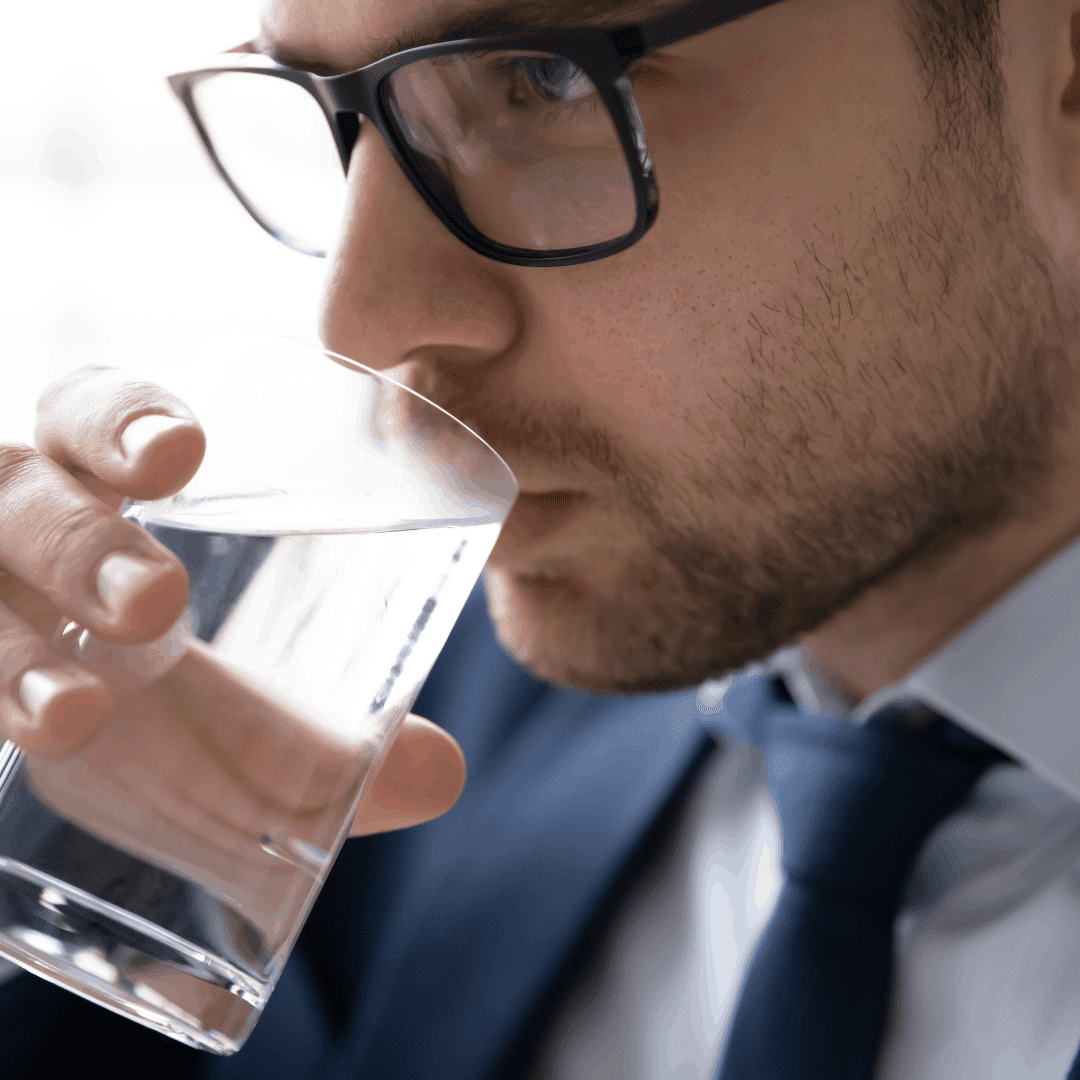

The quality of our drinking water is a greater problem than most Americans think. Harvard Medical School recommends we drink at least 4-6 cups of water a day, yet the U.S. Environmental Protection Agency estimates 8% of American drinking water fails to meet EPA standards. That means Americans drink almost seven million gallons of unsafe water – enough to fill 102,000 bathtubs – every day.
So, what’s the deal with drinking water contaminants? How does water become contaminated, and why aren’t they removed before they reach our faucets? What can you do if you want to reduce these contaminants yourself? All this and more is covered in the article below.
Common Water Contaminants: What To Know
There are four primary types of common contaminants that make their way into our tap water: chemical contaminants, physical contaminants, biological contaminants and radiological contaminants.
- Chemical contaminants may be either natural or man-made. Pesticides are a common chemical contaminant that can make their way into water through surface runoff. Chlorine is another common chemical contaminant, and is added to water to disinfect it during treatment.
- Physical contaminants affect the appearance of water. You may be able to see these contaminants in your water, or they may cause water to take on a cloudy appearance. Common physical contaminants include dirt, rust, dust and sand.
- Some microorganisms can find their way into our tap water, and these are known as biological contaminants. Though these contaminants are generally removed during water treatment, some may still make it to your home - especially if you use a well water source.
- Finally, trace amounts of radiological contaminants such as cesium and uranium, can also be found in drinking water. Though there’s not enough to do any real harm here, you may still feel uncomfortable at the thought of drinking these contaminants.
If you drink city water, that water will have been treated by your local authority before making its way to your home. Water treatment usually reduces contaminants, focusing primarily on the likes of bacteria and viruses, but doesn’t remove them entirely. This means we’re still drinking trace amounts of contaminants, which may build up in our bodies over time.
Water treatment also won’t do anything about the contaminants that water may pick up when traveling through pipes to our homes. According to APM Reports, the US EPA’s lax rules have meant that hazardous lead levels in old water pipes were missed, and that 30 years after lead was banned, millions of people’s homes are still on the receiving end of lead-laced water.
Even small amounts of lead can inhibit brain activity, especially in children. Though the use of lead in pipes is banned, existing lead pipes have been allowed to remain, and with lead being colorless and odorless, the only way to detect it is to test the water that comes out of your faucet.
Lead isn’t the only problem when it comes to the quality of our drinking water, either. Numerous contaminants found in tap water all over the US are associated with a whole host of health problems. In many cases, there isn’t enough research to prove that drinking trace amounts of these contaminants won’t harm us in the long run.

The NIH has warned of the connection between US drinking water contaminants - namely arsenic, nitrates, and PFAS - and different cancers. Ingestion of high levels of arsenic can cause bladder cancer, while studies in Iowa and Nebraska found that ingestion of nitrates is linked to cancers of the esophagus, stomach, brain, bladder colon, pancreas, rectum, and kidney. With nitrates being particularly common groundwater contaminants, especially in rural areas, it’s likely that your own drinking water is an abundant source of nitrates without you even knowing.
Fluoride is another mineral that may enter water through surface runoff - but in some states, fluoride is actually added to drinking water because evidence suggests it plays a role in maintaining oral health. But while fluoride toothpastes and mouthwashes (which we never swallow) may be good for our teeth, fluoride in drinking water has been linked to thyroid disease.
A Water Treatment Solution
This article only discusses a small percentage of the contaminants found in our drinking water, and how these may affect us health-wise. The reality is, there are hundreds of contaminants in water, from aluminum to chromium, ammonia to iron, bacteria to lead.
The EWG reports that 160 of these contaminants are currently unregulated in the US - which means that there are no legal limits in place for them.
Fortunately, water purification systems can protect your family from contaminated drinking water, wherever you are. While it used to be expensive to filter water at home, increasing demand, improved manufacturing processes and the rise in dedicated water quality companies mean it’s now more affordable than ever.
There are many different means of removing contaminants from water, and some are more effective than others.
Reverse osmosis systems are particularly popular because of how thorough they are - they send water through multiple filters and a reverse osmosis membrane that can remove more than 99.9% of all TDS (total dissolved solids).
Whole-home filters and under-sink filters can provide similar, though not quite as impressive, results. If you’d rather not install a water treatment solution at your plumbing, you can opt for a water filter pitcher or filtered water bottle, which are more portable and suitable for use in rented homes.

Not only that, but filtered bottles are also an extremely handy accessory for your outdoor adventures. Take them with you while travelling abroad or on a backpacking trip to always have access to clean, fresh drinking water! (Oh! and they reduce your impact on the environment too!)
Choosing The Right Solution
If you don’t currently know what your water contains, either request a water quality report from your local authority or test your water using a testing kit (available to buy online). Once you know what you’re dealing with, you can take your family’s health into your own hands and find the most suitable means of water contaminant removal for your needs.
Other things to keep in mind when deciding on the best solution for you are:
- Your budget - some filters can cost more than $500, while others cost less than $50
- Your preferred style(s) - you may simply like the look of one filter more than another
- Personal use - how many hours you spend at home may affect how you use a water filter
- The size of your family - the more people to cater for, the bigger-capacity filter you’ll need
There’s no reason to have to put up with a high level of contaminants in your drinking water. No matter where you’re based in the US, you can access clean, pure drinking water without having to spend money on single-used plastic bottles. Once you know what comes out of your tap, you can take the right steps to protect your family going forward.
thanks for the great blWow, this article opened my eyes to the hidden dangers lurking in our drinking water! It’s mind-blowing to think about the millions of gallons of unsafe water Americans consume daily. From lead to biological contaminants, it seems like our tap water is not as pure as we’d like to believe.


Comments